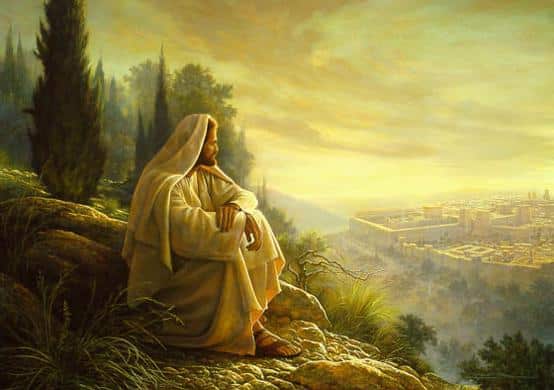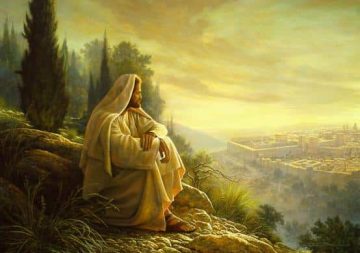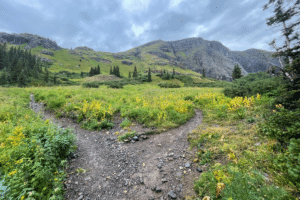Once upon a time, Brigham Young invited everyone’s favorite brother and sister duo, Lorenzo and Eliza Snow, to go on a very special journey across the sea, with George A. Smith and a few other individuals.
The group would begin in Europe and visit places like Vienna and Rome, before very purposefully ending in Jerusalem, the Holy Land of holy lands. A letter from President Young and one of his counselors explained the reason: the city was to be dedicated and consecrated.
The responsibility was accepted and the group set off. They were gone for some time, and much of their day to day sleeping and travel was adventurous to say the least, and unpleasant to say a tiny bit more. (For instance, there were at least “twenty-nine days of tent life and twenty-one days of riding on horseback,” all while Eliza was “in her seventieth year!”).
Throughout it all, the travelers sent letters back across the sea to friends and loved ones. Lorenzo’s primarily detailed the things that he saw and experienced. That is, until he got to Jerusalem. There he wrote about the things that he felt–particularly concerning his Savior, Jesus Christ, and the mission of his Savior, Jesus Christ.
One hour’s ride from our lunching place will bring us to Jerusalem, We move on and at length ascend an eminence, and gaze on the “Holy City,” Jerusalem. Away to the right is Mount Zion, the city of David. Off to our left, that lofty eminence, with an aspect so barren, is the Mount of Olives, once the favorite resort of our Savior., and the spot last pressed by his sacred feet before He ascended into the presence of His Father. These interesting historic scenes, with all their sacred associations, inspire thoughts and reflections impressive and solemn. Yes, there is Jerusalem! Where Jesus lived and taught, and was crucified, where he cried “It is finished,” and bowed his head and died! We slowly and thoughtfully wind Our way down the hill, passing the Russian buildings and other prominent establishments, until we reach the city and enter our encampment. ((Correspondence of Palestine Tourists.))
One of Eliza’s letters tells us more about what they saw and where they went,
But I must hasten to a close. The next day, the 26th, we spent in and about Jerusalem, visited the Church of the Holy Sepulcher; had a fine view of the Garden of Gethsemane; and the next morning struck tents, and spent three days in visiting the Pools of Solomon, the Tomb of Rachel, Bethlehem, the Dead Sea, Jordan river, Gilgal, Jericho, Bethany, etc.,–have not time for description. On the evening of the 1st of March returned to this city, visited the Mount of Olives and the Mosque of Omar. Tomorrow we leave for Syria. ((Palestine Tourists, 229))
While they were there, the land was dedicated, by George A. Smith, after Lorenzo Snow offered an opening prayer.
It is relatively easy to understand why walking where the Savior walked made the traveler’s minds turn more readily to the Savior. It is harder to understand what this means for us, when we may not be blessed with that same opportunity.
What is it about a space that makes it sacred?
What are our sacred spaces, where we may think more readily of Christ? Is it when we take the Sacrament, or sit quietly in the temple? What about when we nurse our baby in the dead of night, or stroll through a lovely park?
A few of my sacred spaces include sacred time, when I am reading (scriptures yes, but also poetry, philosophy, and children’s books), praying, journaling, meditating, and singing.
What is the mission of Jesus Christ?
President Snow reminds us that Christ came to the earth like each one of us: as a tiny, vulnerable baby, who needed to be cared for. Even He had to learn his mission on earth, little by little, or as the scriptures would say, “grace by grace.”
One of the most important aspects of this mission, and one that President Snow emphasized often, is that Christ came to do the will of the Father. An author named Kathryn Shirts once wrote,
The Savior spoke of the Father at every turn, but when Philip asked to be shown the Father, Jesus replied that the Father was made manifest through the Son. ‘Have I been so long time with you, and yet hast thou not known me, Philip? he that hath seen me hath seen the Father; and how sayest thou then, Shew us the Father?’ (John 14:9.)
When we ask about the Mother, might not the Lord give us a similar reply? ‘He that hath seen me hath seen the Mother.’ We think of the Godhead as united in purpose and similar in character. If we as Mormons are going to assert the existence of a female Deity, shouldn’t we assume that her Son mirrors her perfection as well as that of the Father?
It is possible that Christ’s mission was also to do the will of the Mother.
This mission included teaching and healing, but ultimately it included loving and suffering, together, in the form of the Atonement. This at-one-ment is the heart of the Plan of Salvation, and it is for everyone: every child, every man, and every woman.
Because of this, if I were teaching this lesson in person, I would pre-invite a few sisters to offer brief, but genuine testimonies about what the Savior’s mission means to them, personally. Then I would open the question up to all. The reason I would do this? Because none of this matters if we don’t internalize it.
A dear friend of mine recently reminded all of the sisters in our ward that “Throughout [Christ’s] mortal ministry, the Savior showed special love and concern for women. Elder James E. Talmage of the Quorum of the Twelve Apostles said, ‘The world’s greatest champion of woman and womanhood is Jesus the Christ.'” And then she listed some of the ways:
- The Savior taught women in multitudes and as individuals, on the street and by the seashore, at the well and in their homes.
- He showed loving-kindness toward them and healed them and their family members.
- In many parables, He told stories of women engaged in ordinary activities.
- He demonstrated deep familiarity with women’s lives and drew timeless gospel lessons from their everyday experiences.
- He forgave them. He wept with them. He had compassion on them in their specific circumstances as daughters, wives, homemakers, mothers, and widows.
- He appreciated them and ennobled them.
- Even in excruciating pain on the cross, the Savior expressed concern for His mother, who by then was very likely a widow in need of watchcare.
- And the first person to whom he appeared after His Resurrection was a woman.
I add my, “Amen,” and my gratitude.







9 Responses
This is lovely, Rachel, thank you!
I especially love the concept of Christ’s work being inclusive of doing the “will of the Mother.” That made me pause and think- and wonder, if our Heavenly Parents gave us individual, and well as collective advice before we came to earth. I think so, and I wonder what She might have advised me. I have often thought about my relationship with the Father, as it is so prevalent in church culture, but in thinking of Her, rather than Mary, as Christ’s Heavenly Mother, has made me think. And I love what I am thinking. Thank you.
You are welcome, Spunky!
I agree with Spunky. I am sitting in a Starbucks in Mumbai, India, thinking about the will of the Mother, understanding Jesus’ championing of women in a whole new way. Thank you for writing this and for providing a moment of spiritual peace and insight.
You are welcome, Angie. Thank you for your kind and thoughtful words.
Ever since I read this, I have been recalling the time we were in Mumbai. We were at Churchgate, very close to Gaylord’s super yummy vegetarian pastry shop. India is a powerful place for enlightenment, I loved thinking of your comment in juxtaposition to Mumbai.
Namaste, my sister.
[…] One hour’s ride from our lunching place will bring us to Jerusalem, We move on and at length ascend an eminence, and gaze on the “Holy City,” Jerusalem. Away to the right is Mount Zion, the city of David. Off to our left, that lofty eminence, with an aspect so barren, is the Mount of Olives, once the favorite resort of our Savior., and the spot last pressed by his sacred feet before He ascended into the presence of His Father. These interesting historic scenes, with all their sacred associations, inspire thoughts and reflections impressive and solemn. Yes, there is Jerusalem! Where Jesus lived and taught, and was crucified, where he cried “It is finished,” and bowed his head and died! We slowly and thoughtfully wind Our way down the hill, passing the Russian buildings and other prominent establishments, until we reach the city and enter our encampment.1 […]
Thank you thank you….You have given me an entire new perspective on how to present this discussion to the sisters in my ward. Beautiful!!
Welcome welcome! Best luck with your lesson.
Even though it was technically the same lesson, the lesson we had today went in a very different direction and was not very uplifting for me, so thanks for this! Reading it when I got home made me feel a little better about church today. =)